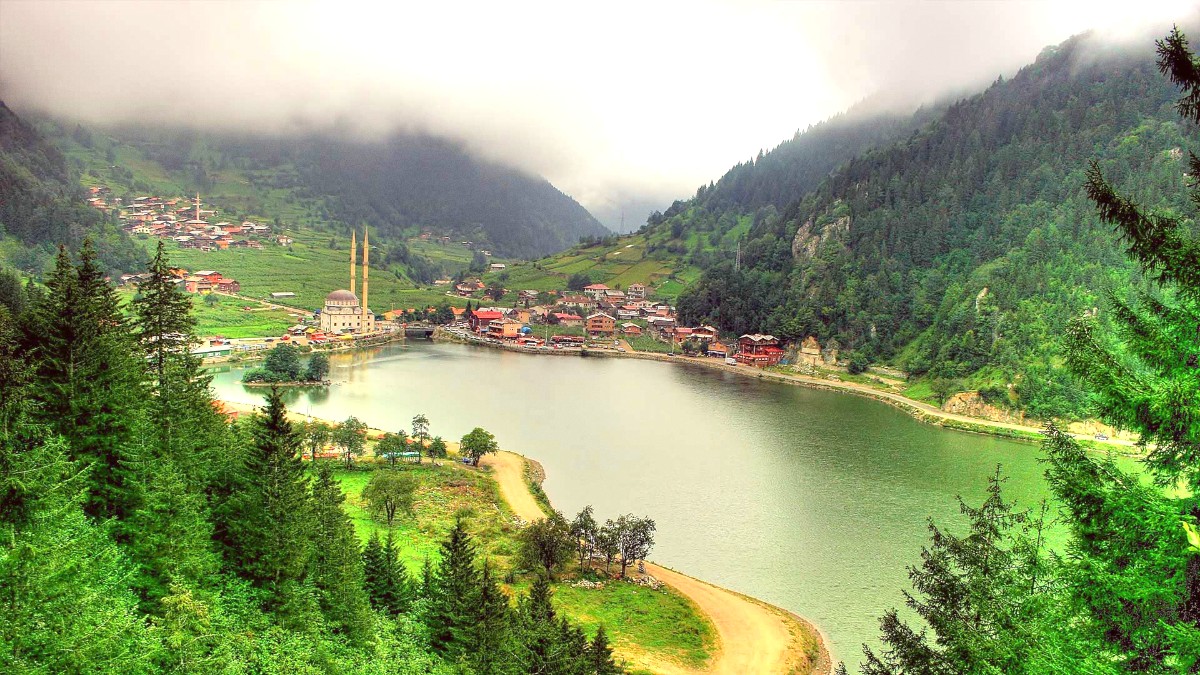
The Black Sea And Northeastern Anatolia, Turkey
Beyond the city, the landscape transforms into misty plateaus, winding river valleys, and a coastline unlike any other in Turkey. Trabzon invites exploration of its layers, discovery of its unique character, and creation of memories in a region often overlooked by mainstream tourism.
Trabzon is an unique travel experience, distinct from Turkey's more commonly visited destinations. Expect lush landscapes, traditional Black Sea cuisine, and a strong sense of regional identity.
The city center, around Meydan Parkı, bustles with activity, with modern shops alongside traditional bazaars. Beyond the urban core, the dramatic scenery of the Pontic Mountains comes into view, with features like Sumela Monastery clinging to a cliff face and the serene beauty of Uzungöl Lake.
Trabzon sits on the southeastern coast of the Black Sea, nestled between the Pontic Mountains and the sea. This geographical position influences much of its climate, culture, and economy. The city itself spreads along the coastline, extending into the foothills of the mountains.
Its location within the Eastern Black Sea region (Karadeniz Bölgesi) signifies a humid subtropical climate, distinct from the drier inland Anatolian plains or the Mediterranean coast. Rivers originating in the Pontic Mountains carve deep valleys, a factor in the region's dramatic topography and lush, green landscapes.
A long coastline defines the city's northern edge.
The city lies at the foothills, with lush valleys.
Distinct from other Turkish regions, with ample rainfall.
Rivers carve deep, dramatic valleys from the mountains.
A point of entry to the wider Eastern Black Sea region.
Trabzon’s history stretches back over 4,000 years, making it one of the oldest settlements in Anatolia. Founded by Greek colonists from Miletus in the 8th century BC, it thrived as a trading post. Its strategic Silk Road location, connecting East to West, yielded immense wealth and cultural exchange.
The Byzantine era was notably prominent, especially after the Fourth Crusade in 1204, when it attained capital status for the Empire of Trebizond. This independent Greek state flourished for over 250 years, developing an unique culture and leaving behind architectural masterpieces like the Hagia Sophia and Sumela Monastery.
In 1461, Ottoman Sultan Mehmed II conquered Trabzon, making it part of the Ottoman Empire. This Ottoman period saw the construction of numerous mosques, bazaars, and bathhouses, blending with the existing Byzantine heritage. In the early 20th century, Trabzon had a role in the Turkish War of Independence.
Today, the city keeps its historical identity, giving visitors a tangible link to a past where empires converged and cultures intertwined. The layers of history, from ancient walls to religious structures, tell a story of resilience, trade, and cultural synthesis.
Trabzon presents visitors with a destination valuing its heritage, celebrating its natural environment, and offering a genuine slice of Turkish life away from typical tourist trails.
This section provides a summary of what to expect during your Trabzon visit.
Expect green mountains, misty plateaus, and an unique coastline defined by the Black Sea.
Ancient churches and Ottoman mosques dot the city, a legacy of its Silk Road past.
Savor fresh seafood, corn-based dishes, and the region's renowned tea and butter.
Trabzon’s climate is humid, with green landscapes maintained by ample rainfall, especially outside of summer. Summers are warm but can feel humid, while winters are cool and wet, with snow at higher elevations.
A journey to Trabzon unveils a genuine slice of Turkish life beyond typical tourist paths.